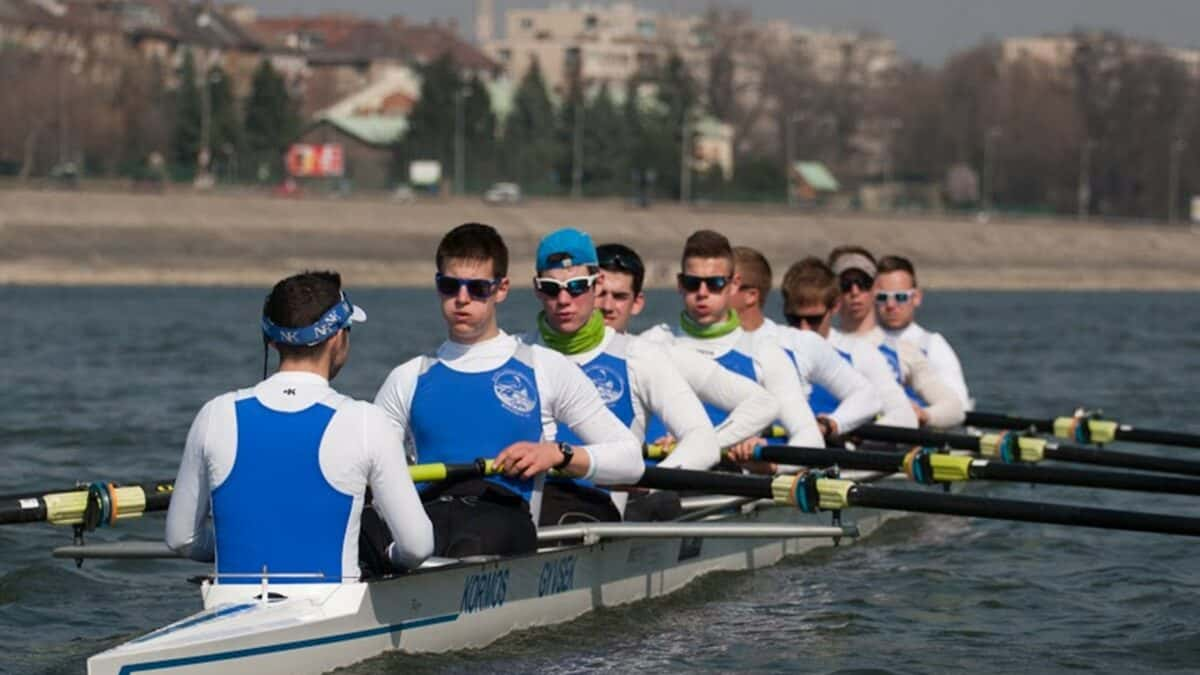
30 Mar 2015
Hungary goes racing
This regatta – a head race held on the Danube River in the heart of Hungary’s capital city, Budapest, over a distance of 4500 m – is fast growing. This year it attracted 70 crews made up of eights and quadruple sculls of different age categories form juniors to masters. A total of eight countries came to race including, Austria, Croatia, Germany, Italy, Poland, Serbia, Slovakia and, of course, Hungary.
The conditions were ideal for racing with Budapest turning on a sunny early spring day for the 600-plus rowers. The rowers got to follow a course that went past some of Budapest’s most iconic sites and building including Parliament, the Chain Bridge and Buda Castle.
A mixture of all levels of rowers competed, including former Olympians and World Championships medal winners. Among some of the names were former Italian Olympians, Raffaello Leonardo, Marco Penna and Mario Palmisano. But the fastest boat overall was the men’s eight from Gyor, Hungary who successfully defended their title by winning the Budapest Cup in a time of 12:15.
There is an initiative to grow attractive events for club rowers in central Europe. The idea is to stage a series of head races for eights in the three capital cities all situated on the banks of the Danube River; Vienna (AUT), Budapest (HUN) and Bratislava (SVK) and start the Capital Cup. The presidents of the three rowing federations recently signed an agreement of cooperation. This regatta in Budapest thus becomes the first stage of the Capital Cup. It will continue with the Bratislava University Eights Regatta in Slovakia and the final regatta will be the Wiener Achter in Vienna in the middle of May.
[PHOTO src=”118476″ size=”mediumLandscape” align=”right”]
A view of the course at the Budapest Cup in Budapest, Hungary. ©Laszio Szebelledy
Historical background
The Count István Széchenyi Memorial Regatta was named after Count István Széchenyi who, besides being a politician, reformer, theorist and writer, was the one who introduced the sport of rowing in Hungary.
Besides the Count’s comprehensive political ideas, his activities were focused on the development of transportation infrastructure, promoting Hungarian language and the establishment of the Hungarian Academy of Sciences as he understood its importance for development and communication.
Count Szechenyi wanted to develop Buda and Pest as the major political, economic and cultural centres in Hungary. He supported the construction of the first permanent bridge between the two cities. Besides improving transportation connections, the Chain Bridge was a symbolic structure, foreshadowing the later unification of the two cities as Budapest, connected across, rather than divided by the river. The Chain Bridge was designed by William Tirney Clark, who also designed the first suspension bridge to span the River Thames in London; Hammersmith Bridge and the Marlow Bridge.
The Count fell in love with rowing when travelling in England in 1822 and on his return he set up rowing in Hungary. He went on to organise a rowing regatta between the Hungarian, English and Italian workers building the Chain Bridge. The race was won by the Hungarians coxed by Scotsman, Adam Clark, who was supervising the construction of the bridge.
The Count Istvan Szechenyi Memoral Regatta was established on the 150th anniversary of the foundation of the first rowing club in Hungary.

